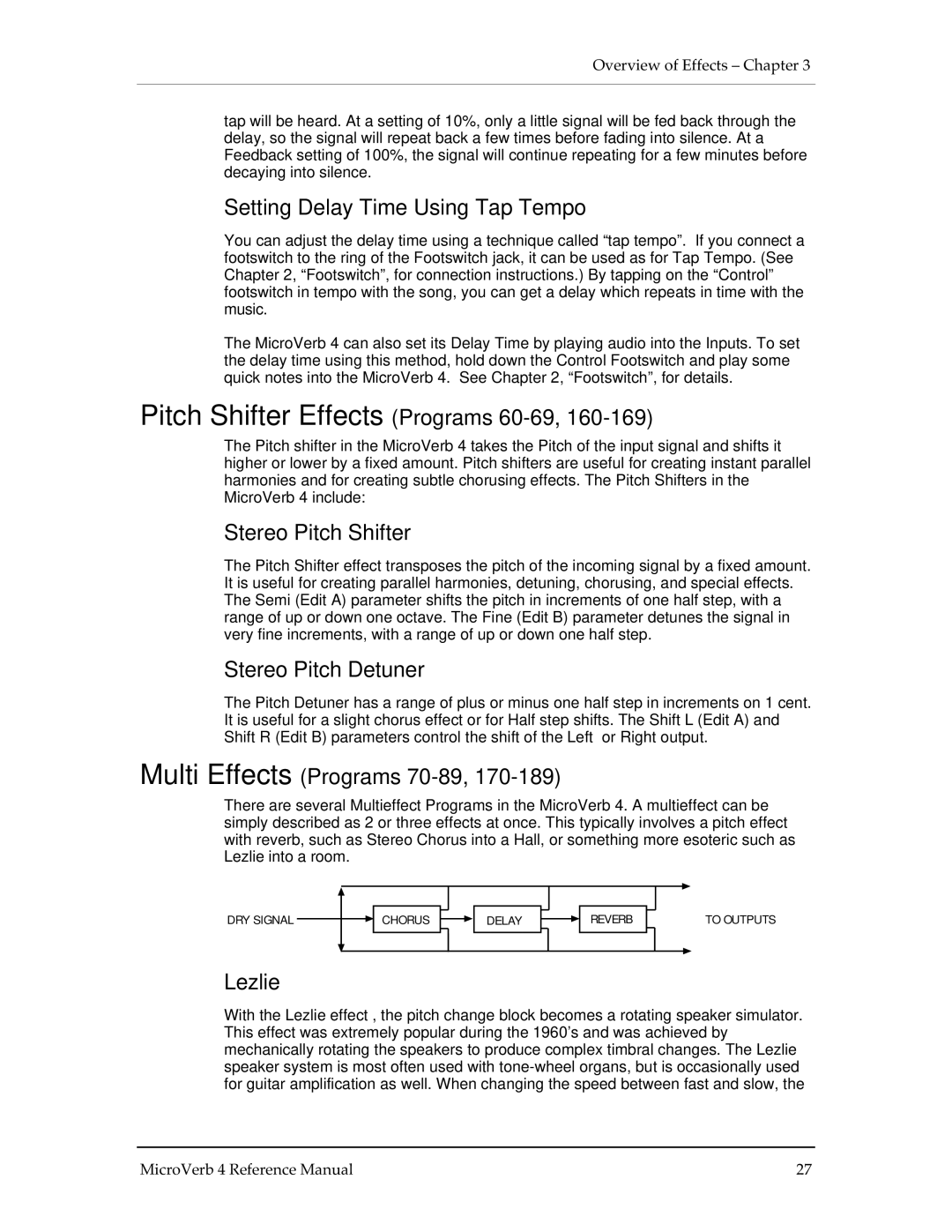
Overview of Effects – Chapter 3
tap will be heard. At a setting of 10%, only a little signal will be fed back through the delay, so the signal will repeat back a few times before fading into silence. At a Feedback setting of 100%, the signal will continue repeating for a few minutes before decaying into silence.
Setting Delay Time Using Tap Tempo
You can adjust the delay time using a technique called “tap tempo”. If you connect a footswitch to the ring of the Footswitch jack, it can be used as for Tap Tempo. (See Chapter 2, “Footswitch”, for connection instructions.) By tapping on the “Control” footswitch in tempo with the song, you can get a delay which repeats in time with the music.
The MicroVerb 4 can also set its Delay Time by playing audio into the Inputs. To set the delay time using this method, hold down the Control Footswitch and play some quick notes into the MicroVerb 4. See Chapter 2, “Footswitch”, for details.
Pitch Shifter Effects (Programs 60-69, 160-169)
The Pitch shifter in the MicroVerb 4 takes the Pitch of the input signal and shifts it higher or lower by a fixed amount. Pitch shifters are useful for creating instant parallel harmonies and for creating subtle chorusing effects. The Pitch Shifters in the MicroVerb 4 include:
Stereo Pitch Shifter
The Pitch Shifter effect transposes the pitch of the incoming signal by a fixed amount. It is useful for creating parallel harmonies, detuning, chorusing, and special effects. The Semi (Edit A) parameter shifts the pitch in increments of one half step, with a range of up or down one octave. The Fine (Edit B) parameter detunes the signal in very fine increments, with a range of up or down one half step.
Stereo Pitch Detuner
The Pitch Detuner has a range of plus or minus one half step in increments on 1 cent. It is useful for a slight chorus effect or for Half step shifts. The Shift L (Edit A) and Shift R (Edit B) parameters control the shift of the Left or Right output.
Multi Effects (Programs 70-89, 170-189)
There are several Multieffect Programs in the MicroVerb 4. A multieffect can be simply described as 2 or three effects at once. This typically involves a pitch effect with reverb, such as Stereo Chorus into a Hall, or something more esoteric such as Lezlie into a room.
DRY SIGNAL ![]()
![]() CHORUS
CHORUS
DELAY
REVERB
TO OUTPUTS
Lezlie
With the Lezlie effect , the pitch change block becomes a rotating speaker simulator. This effect was extremely popular during the 1960’s and was achieved by mechanically rotating the speakers to produce complex timbral changes. The Lezlie speaker system is most often used with
MicroVerb 4 Reference Manual | 27 |
